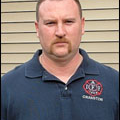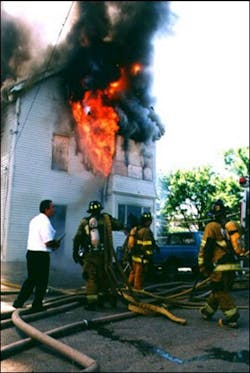Imagine going out to the mailbox and finding the latest issue Firehouse Magazine with a blank cover. You look inside and find the usual articles with no accompanying photos. You look even further and find the Fire Fronts and Hotshots sections are gone.
Most people read the magazines for the latest tips and information but there are many people that flip through the pages just for the photos. Fire Service magazines rely on their readers to submit photos of local incidents and authors rely on the photos to visually assist the reader in getting their point across.
This article will examine some of the most frequently asked questions about getting your photos published in your favorite magazine.
What should I do first?
The first thing that should be done is to go through your favorite magazine and see what types of photos they regularly use. Do they print rescue or apparatus shots? Don't submit a photo of an ice rescue to a magazine that specializes in apparatus photography.
What do the editors look for?
Editors receive thousands of photos per month but have very limited space to publish the pictures. You should send sharp, focused photos, ones that will immediately catch the editor's eye. Each photo should be able to tell its own story. Ask a friend for an honest opinion about the photo.
Many photos will be discarded immediately such as those that are blurry, out of focus or poorly exposed. Be sure that the photo is of a recent fire because many magazines will not print photos from fires that occurred two years ago.
What type of photo should I send?
Again, check to see what type of photos the magazine will typically publish. Some publications will print a photo of a rig in front of a fire but others want to see firefighters in action. They want to see lines being stretched, ventilation taking place and of course, any type of rescue. Photos of firefighters stretching lines into a fully involved structure or the roof team opening up with heavy fire venting from the hole make for eye-catching photos.
Try to avoid sending shots taken from a block away or of a mountain burning forty miles away. Another shot to avoid sending is the "unsafe" firefighter. In today's safety conscious fire service, every buckle must be fastened, collars up, hoods on and everything in place before we dismount the apparatus. Many magazines will no longer publish photos of "unsafe" acts being performed on the fire ground.
How should the photo be sent?
In the past, a photographer would have to send a print or slide by mail. But with computers and digital photography, some things have changed. You must first find out what image format the magazine accepts. Check to see if it accept prints, slides or e-mails. It you will be sending a print, send a glossy print of at least 8x10 inches. Make your shots stand out and as professional looking as possible.
Don't send a 3x5 print or a negative. Professional photographers carry portfolios of their best 8x10 shots. How many have you seen carrying albums of 3x5 or 4x6 inch shots?
If the magazine accepts photos electronically, find out if they prefer to receive them via e-mail with an attachment or compressed. You must also find out what resolution (dpi) and what image size they are looking for.
Horizontal or Vertical?
Magazines will accept photos either way but if you are looking to have a cover photo, you should send a vertical shot. Magazines are generally 8 inches wide by 11 inches long, essentially the same size as the vertical shot you send. If you are sending a photo with the hope that it will end up on the cover, be sure there is room at the top for the magazine title. Horizontal shots become too distorted to try to fit on a vertical magazine cover but may fit perfectly on a calendar cover. Try to take photos of each incident with plenty of vertical shots as well as horizontal shots, to cover all of the bases.
Should I send anything with the photo?
Every photo should be sent with a one or two paragraph description of the event. It should include the city or town, departments that handled the incident, the date, extent of the fire and any injuries that may have occurred. A newspaper clipping of the event may also be helpful, but remember that is copyrighted material.
Every photo should also have your name, address, phone number. Additional information such as social security number may be needed later for payment but wait for further contact. Most magazines pay for the right to use your photo and will need this information in order to send you a check.
NEVER write directly on the photo. The pressure from the pen will be seen through the front of the photo, making it unusable. Write all of the information on a label and attach it to the back of the photo.
Every submission should also include a self-addressed, stamped envelope. Most magazines will return unused photos to the photographer if this is available to them.
There is no better feeling as a photographer, than to flip through your favorite magazine and see one of your photos inside. Try to think about your favorite magazine the next time that you are photographing a fire. Picture shots in your mind that you think will appear in the magazine and then take them. Have them printed out and ask you friends for their opinions. Get everything together and the send them in. You have nothing to lose and everything to gain.
Related:
About the Author

